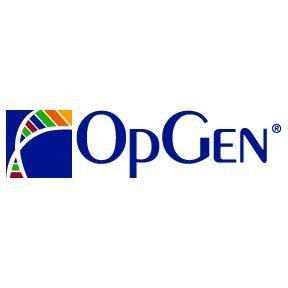
OpGen Inc (NASDAQ:OPGN), a Market Exclusive favorite, earlier this week announced that it is bolstering its already long-standing relationship with pharmaceutical giant Merck & Co., Inc. (NYSE:MRK). The latter owns a sizeable chunk of OpGen already, and the two companies are working together to bring about what would essentially amount to a revolution in the infectious disease space. A number of news media outlets have addressed the latest arrangement, but none have really gotten to the crux of what it means for the space. Perhaps more importantly for OpGen shareholders, what it means for the development stage biotech.
Here’s an answer to both these points.
Some background: Infectious disease standard of care (SOC) treatment is, for want of a better word, a mess right now. Patients with a suspected infection are flooded with antibiotics, some of which might close in on the infection, the vast majority of which will not, and then left to recover. If they recover, great. If not, and this is the case in a great many of patients, physicians will try a fresh cocktail, or the patient will die. Sometimes, and there’s a very concentrated window of time within which this can happen, a facility identifies the infection and can treat with a more specific (but still varied) regimen of antibiotics.
Again, this either works or it doesn’t. If it doesn’t, the patient doesn’t often have the opportunity to take another exploratory cocktail of antibiotics.
The problem is this: it takes at least 24 hours for a test to identify the pathogen that is causing the infection. Often more. Once identified, physicians have no real way of knowing whether the pathogen is resistant to a particular strain of antibiotics. As such they have to try a host of different types to see what works. There’s a chance it could be resistant to all of them, and – here’s the kicker – this chance is increasing every day. More and more antibiotic resistant pathogens are identified as time goes on, and are killing people daily, and this number is accelerating.
So, to summarize this process:
- Patient gets ill
- Physician runs test to identify pathogen, while administering cocktail of antibiotics.
- 24-48 hours pass
- Physician identifies pathogen
- Patient gets a fresh batch of antibiotics that are known to be more effective (but still far from guaranteed) against this pathogen
- 48-72 hours pass
- Patient gets better, or dies.
Here’s where OpGen comes in. The company has developed a test that can identify pathogens in 20 minutes. It’s currently widely in use (although far from widely enough) and is helping physicians improve the accuracy of their pathogen-targeting in infected patients.
That’s just the start, however. The company has also developed a test that can run concurrently to its 20-minute test, a test that tells physicians within 1 hour which antibiotics the pathogen is resistant to.
Compare this with the stream above, and it changes to this:
- Patient gets ill
- Physicians run QuickFish (this is the pathogen test) and Acuitas
- One hour passes
- Physician knows precisely what the pathogen is, and what antibiotics this particular pathogen is resistant to, allowing the physician to prescribe a cocktail that has a much better chance of actually working.
This is a dramatic improvement when it comes to streamlining the process, but OpGen doesn’t stop there. The company has also developed a database into which the physician can plug the results of the Acuitas test called Acuitas Lighthouse. The Lighthouse system will then return a results readout that shows not only which antibiotics the pathogen in question is resistant to, but which are most likely to work against that specific pathogen, rated by percentage chance of estimated efficacy rate.
The physician can now find out within an hour exactly what cocktail of antibiotics is likely to have the most impact on the exact pathogen causing the issue.
Again though, it doesn’t stop there. Enter Merck, and the latest arrangement.
Merck has built up a database of bacterial pathogens over the last 15 years that stands at a current count of 200,000, and is accelerating in volume by close to 50,000 annually (41,000 this year alone). The system is called Study for Monitoring Antimicrobial Resistance Trends (SMART), and it’s one of the most comprehensive stores of data on antibiotic resistance in in-vitro studies in the world.
The latest agreement sees Merck make this entire database available to OpGen. OpGen can plug the database into its Lighthouse database, and populate the latter with all of the information that the former has collected.
What’s the importance of this?
With Lighthouse, the technology is only as strong as its database. The more data available to the system, the more accurate, and the more all-encompassing, it can be in identifying the most effective group of antibiotics for a particular pathogen. In plugging the Merck database into the Lighthouse system, OpGen has just accelerated its proprietary technology’s learning curve by 15 years, and made what is already set to be a revolutionary system far more effective.





